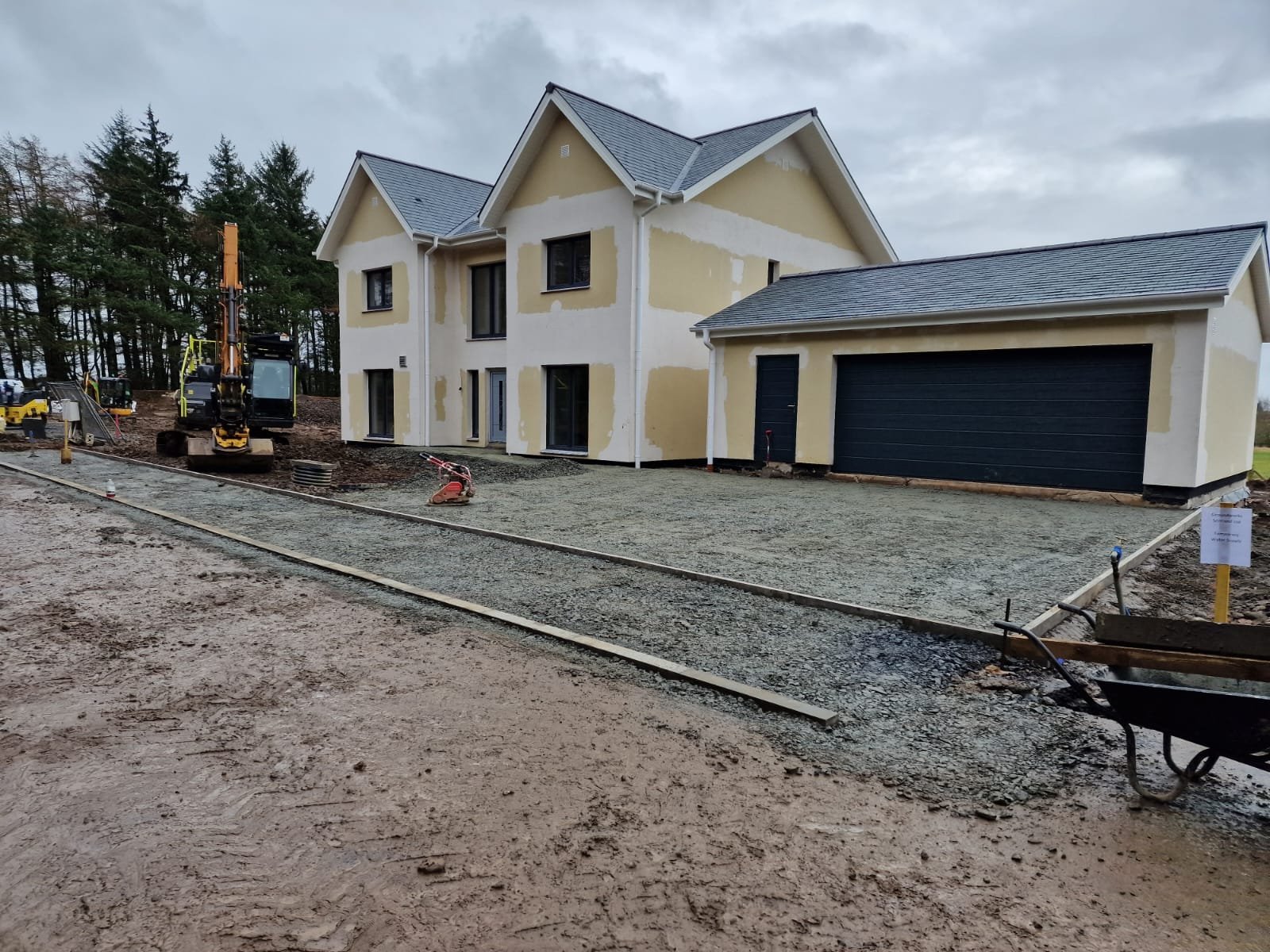
Custom & Self-Build Blog
How UK Accident Victims Can Secure Compensation & Invest in a Self-Build Accessible Home with the Help of a Turnkey Builder & Occupational Therapists
Accidents can have profound and long-lasting impacts.
Beyond the immediate physical and emotional trauma, victims may grapple with long-term challenges, especially if they suffer from serious injuries. The UK has established a comprehensive system to ensure accident victims receive the assistance and compensation they rightfully deserve.
Additionally, with astute financial planning and the expert guidance of occupational therapists, this compensation can be a pivotal tool for a brighter, more comfortable future.
Here's a guide on how accident victims in the UK can secure compensation, and with the aid of occupational therapists, invest in a tailor-made self-build or custom-build turnkey accessible house.
1. Securing Compensation:
Report the Accident:
Once immediate medical concerns are addressed, it is crucial to report the incident. This could be to the police (for road traffic accidents or criminal injuries) or to the relevant authority (like an employer or local council).Seek Legal Advice:
Engaging a solicitor specializing in personal injury claims can offer invaluable guidance. They can provide clarity on the claim's viability, potential compensation figures, and shepherd the victim through the intricate process.Gathering Evidence:
Supporting the claim necessitates gathering substantial evidence, including photos of the accident site, witness accounts, and medical records.Negotiation & Settlement:
A majority of personal injury claims are settled outside court. The liable party (or their insurer) may propose a settlement. Legal representation during these negotiations ensures that victims attain a just amount.Court Proceedings:
Should an agreement remain elusive, the claim might proceed to court. Both parties present their arguments, and a verdict is rendered regarding culpability and compensation.
2. Investing in a Self-Build Accessible Home with the Assistance of Occupational Therapists:
Consulting an Occupational Therapist:
Occupational therapists play a pivotal role in assessing a victim's needs post-accident. They can provide insights into specific home modifications and features that can aid in daily living and enhance mobility and independence.Finding a Suitable Self-Build Building Plot:
Identify a self-build plot that aligns with the requirements for an accessible lifetime home set out by the occupational therapist, considering aspects like location of the house, proximity to essential services, and ground suitability.Planning & Design:
Engaging a specialist architect familiar with accessible house requirements is key. With input from the occupational therapist, they can blueprint a self-build turnkey house that addresses the victim's unique needs – from wider doorways and ramps to specialized bathroom fittings, hoists, wheelchair friendly lower kitchens, easy access electrical switches and home automation and much more.Secure Necessary Permissions:
Prior to construction, acquire planning permissions from the local council. It's imperative that the design conforms to all stipulated building regulations.Construction:
Opt for a specialist turnkey builder such as Cherish Homes who has a track record of crafting accessible homes with all the requirements for wheelchair access if needed and all the other specialist requirements that your occupational therapist and others can advise you on. Ensure that the construction aligns with the occupational therapist's recommendations and the architectural specifications.Final Assessment:
After construction, have the occupational therapist evaluate the home again. They can suggest any final tweaks or additions to make the space perfectly suited to the victim's needs.
Conclusion
Accidents, while harrowing, don't at all spell the end of a very fulfilling life and a home that you can enjoy to the full. The UK's legal and construction realms offer avenues for victims to reclaim their autonomy and also pay for a new and suitable accessible home.
Proper legal counsel ensures rightful compensation, and with the expertise of occupational therapists, these funds can be effectively channeled into crafting a custom accessible house. Such a home not only meets physical needs but also offers a sanctuary for healing and rejuvenation.
Self-Build Accessible Lifetime Homes: Custom Build House Design for a Better Future
The world is rapidly recognising the importance of inclusive design, and homes are no exception. Accessible lifetime houses not only offer practical solutions for those with unique physical needs and wheelchair access requirements but also ensure that every individual, irrespective of their physical condition, can live comfortably and independently. Whether you're planning to self-build on a plot of land or replace an existing dwelling, an accessible home is a worthy investment for various reasons.
Cherish Homes work with Dan-Wood, the specialist home builder and self-build turnkey accessible homes are a standard choice from Dan-Wood and can then be further modified to suit your exact needs before building.
Cherish Homes can design you a perfect accessible home and then provide a fixed price quotation to aid with your claim for damages. Cherish Homes are a wheelchair friendly accessible home builder.
Understanding Accessible Homes
At its core, an accessible home is designed with universal design principles in mind. This means that the home is crafted in a manner that is usable by everyone, regardless of their age, ability, or status in life.
Some features commonly found in accessible homes include:
No-step entry:
No one needs to use stairs to get into a standard entrance and with a wider doorway too.
One-story living:
Everything one needs, including a bedroom, bathroom, and kitchen, is available on one level. Live in carer rooms or suites are also an easy to supply options
Wide doorways and hallways, and open plan options:
This makes the space wheelchair-friendly.
Lever door handles and rocker light switches:
These are easier to use than knobs and standard switches. We can also provide home automation such as one switch by the front door to turn on or off all lights you require.
Bathroom supports:
Grab bars and non-slip flooring are vital for bathroom safety.
Movement throughout the property:
Hoists in rooms and between rooms designed and built into the ceiling for ease of use and none of the difficulties and compromises of trying to modify an existing home.
Building or Retrofitting an Accessible Lifetime House
Self-build on a plot:
For those venturing into a new build, the world is your oyster. You have the freedom to design your home from scratch, ensuring every aspect caters to accessibility needs. Incorporate wide spaces, lower countertops, raised electrical outlets, and other such design elements right from the start.
Replacing an existing dwelling:
Retrofitting an existing structure can be more challenging but is not impossible. The process usually involves widening doorways, installing ramps, remodeling bathrooms, and making the kitchen more functional for wheelchair users.
The Experts Behind the Lifetime Home Design
Creating a truly accessible home requires the expertise of specialist architects and builders who understand the nuances of universal design. These professionals are trained to envision a space that is both functional and aesthetically pleasing.
With their experience:
Architects craft a blueprint that seamlessly integrates accessible features without compromising on the home's visual appeal. In a way, think of it as a self build accessible home but with a team around you to support the turnkey, hassle free delivery of your lifetime house
Specialist Package Builders such as Cherish Homes and Dan-Wood that we work with ensure that every feature is implemented correctly, guaranteeing the safety and comfort of the occupants.
It also means you are dealing with an expert in delivery of the additional required features such a hoists, specially designed kitchens with accessible levels, electronic ease of use facilities such as simpler lighting control, accessible external doorways, wider doorways and corridors and much more.
The Impact of Accessible Life Time Homes
Accessible homes are an essential requirement for:
Accident and medical negligence victims:
Recovery is much smoother when one's surroundings support your physical needs.
Individuals with congenital disabilities:
A home tailored to your requirements allows for a more independent life.
Those battling illnesses:
Progressive diseases might make mobility challenging. An accessible home is a proactive approach to ensure comfort in the later stages and is a true lifetime home.
Elderly individuals:
As mobility becomes an issue with age, features like grab bars, ramps, elevators or lifts and wider hallways can make daily tasks less daunting.
In Conclusion
Accessible lifetime homes are more than just houses with ramps or wider doors for easy wheelchair access; they represent a shift in societal thinking, placing emphasis on inclusivity and empathy. Investing in an accessible home is an investment in a future where every individual, irrespective of their physical condition, can live a life of dignity, comfort, and independence.
Cherish Homes are your ideal wheelchair-friendly accessible house builder so please get in touch today.

